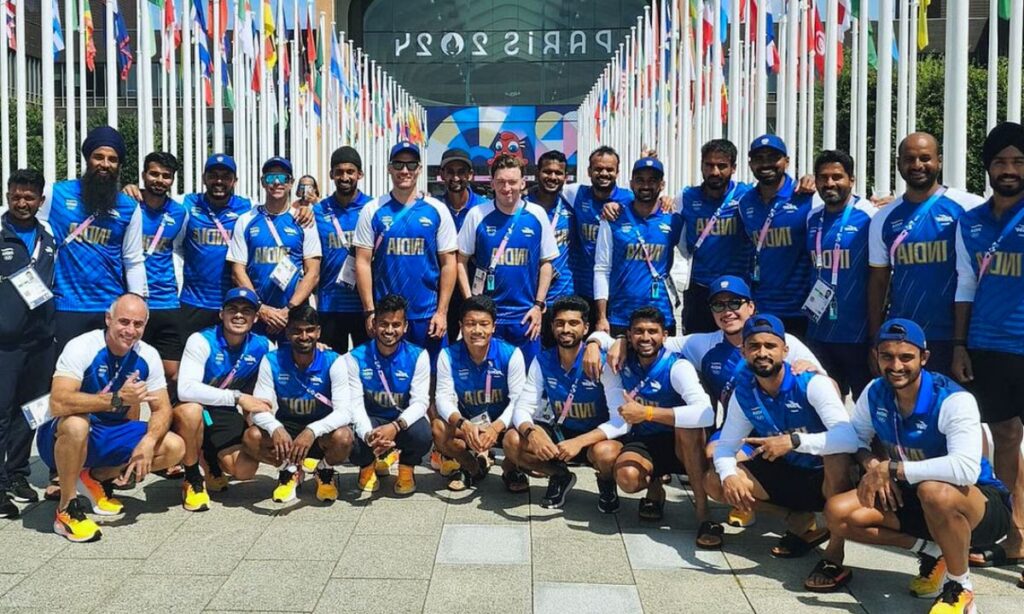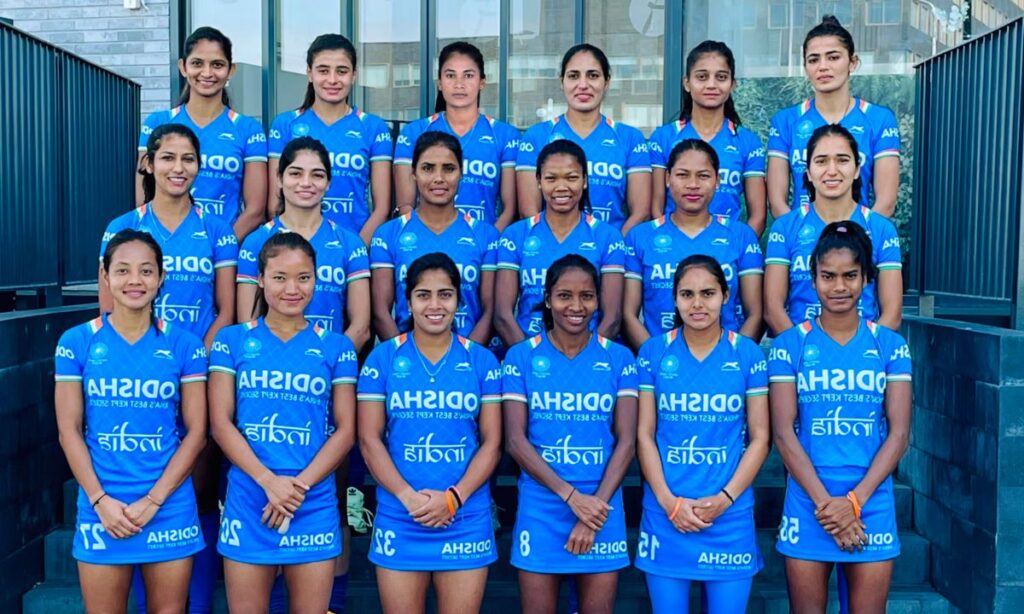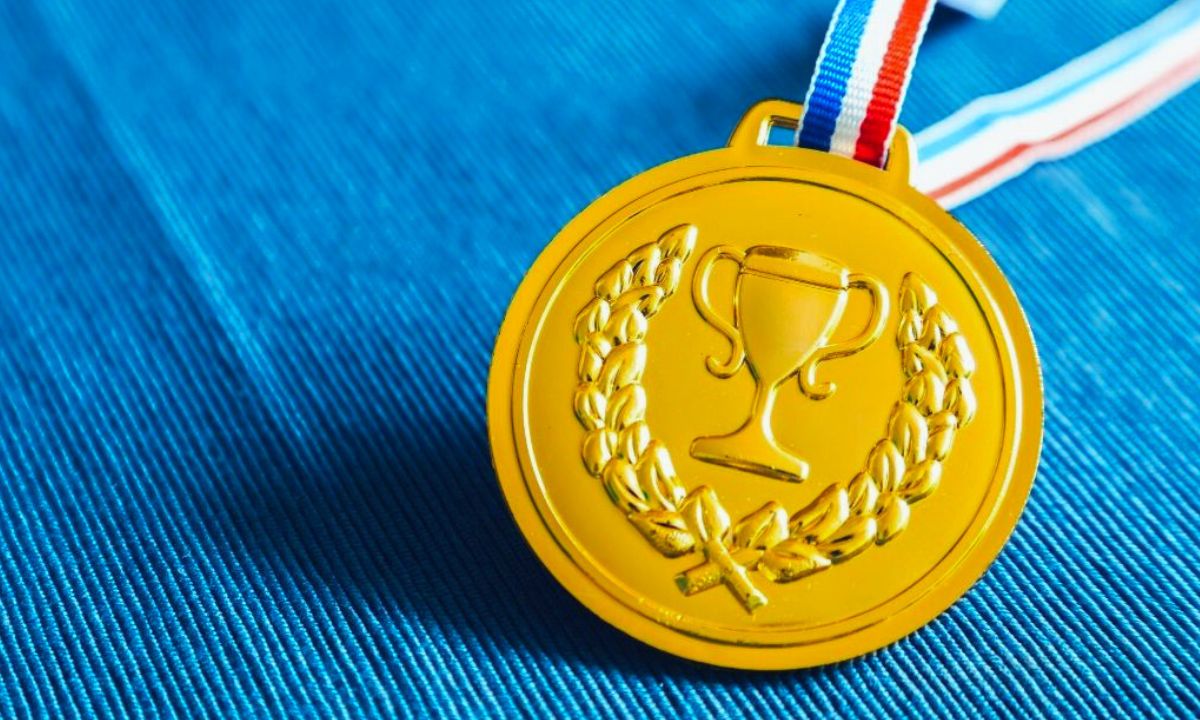The Indian hockey team has a rich and celebrated past. Known as one of the most successful teams in Olympic history, India dominated the sport from the 1920s to the 1980s. With eight Olympic gold medals, India’s golden era began in 1928 when it won its first gold in Amsterdam. Players like Dhyan Chand became legends, symbolizing skill and sportsmanship. This dominance wasn’t just about medals; it shaped the national identity and inspired generations. Today, this legacy fuels both nostalgia and ambition, as fans hope to see India reclaim its position at the top of the hockey world.
The Golden Era: 1928 to 1980
From 1928 to 1980, the Indian hockey team was a force no one could match. Winning six straight Olympic golds from 1928 to 1956, India remained undefeated in 30 consecutive matches. This period also witnessed remarkable players like Balbir Singh Sr., Udham Singh, and Leslie Claudius. Their seamless teamwork and dribbling skills left global audiences in awe. Indian hockey wasn’t just about winning—it was a showcase of artistry. The team’s style was unique, blending technique with passion. This era is often called “The Golden Era” for a reason, and it still serves as a benchmark for excellence.
Challenges in the Post-Golden Period
After the 1980 Moscow Olympics, where India won its last gold, the team faced a decline. Structural changes in international hockey, including the transition from grass to artificial turf, affected India’s game. The Indian hockey team struggled to adapt to the faster, more physical style. There were internal issues too—administrative mismanagement, lack of funding, and poor infrastructure slowed progress. Despite these setbacks, the team never lost its core fighting spirit. Each tournament became a lesson, building the foundation for future resurgence. While the victories were fewer, the passion among players and fans stayed intact throughout this difficult phase.
The Revival of Indian Hockey
The early 2000s marked the beginning of a revival for the Indian hockey team. Investment in infrastructure, better coaching staff, and focus on fitness brought slow but steady progress. Initiatives by Hockey India and the Sports Authority of India helped professionalize the sport. Key tournaments like the Sultan Azlan Shah Cup and Champions Trophy became platforms for testing new talent. Coaches like Terry Walsh and Roelant Oltmans introduced modern strategies. Most importantly, players started to regain confidence. This phase wasn’t about instant success—it was about laying a new foundation. The team showed grit and began climbing back up the global rankings.

2021 Tokyo Olympics: A Turning Point
The Tokyo 2021 Olympics were a turning point for the Indian hockey team. After a 41-year medal drought, India clinched bronze by defeating Germany 5-4. This win was more than just a medal—it was a moment of emotional release for millions. The victory sparked national pride and reignited interest in hockey. Players like PR Sreejesh, Harmanpreet Singh, and Manpreet Singh became household names. The match showcased India’s fighting spirit, coming back from a 3-1 deficit. Social media erupted in celebration, and the sport received renewed government support. Tokyo 2021 reminded the world that Indian hockey was truly back on track.
Key Players Behind the Team’s Success
Several players have shaped the success of the Indian hockey team. Legendary names like Dhyan Chand and Dhanraj Pillay are known worldwide, but the new era has its heroes too. Manpreet Singh, the team captain, has led by example with unmatched intensity. PR Sreejesh, the goalkeeper, played a crucial role in the Tokyo Olympics bronze medal. Defenders like Harmanpreet Singh and midfielders like Vivek Sagar Prasad bring balance and consistency. The blend of experienced leaders and promising youngsters makes this squad dynamic. These players are more than athletes—they are symbols of India’s determination to excel on the global hockey stage.
The Role of Coaches and Management
Behind every great team is strategic leadership. The Indian hockey team has benefited greatly from high-caliber coaching staff in recent years. Graham Reid, the current head coach, has brought a structured, analytical approach that blends well with India’s natural flair. Hockey India’s improved management practices have also helped streamline player development. They’ve ensured better medical care, data-driven training sessions, and psychological support. Unlike in the past, today’s coaching focuses on fitness, endurance, and tactical adaptability. This shift in mindset has allowed players to perform at peak levels. The positive synergy between coaches and players is visible in every tournament.
Youth Development and Talent Pipeline
India’s future in hockey depends heavily on youth development. Programs like the Khelo India initiative and the SAI academies have helped identify and nurture young talent. Many current players started their journey through these grassroots platforms. The junior Indian hockey team’s success—like winning the 2016 Junior World Cup—reflects the strength of this pipeline. Emphasis is placed on early training, access to quality coaching, and participation in international tournaments. These efforts aim to produce mentally strong, technically sound players ready for the big stage. Investing in young talent ensures that the Indian hockey team will continue to grow stronger with time.
Support from Fans and Media
The Indian hockey team has always enjoyed a passionate fan base. From rural villages to big cities, hockey has deep cultural roots. The recent successes have reignited this connection. Social media platforms like Twitter and Instagram allow fans to directly engage with players and celebrate milestones. Major media outlets now regularly cover hockey news, increasing its visibility. Television broadcasts and live streams bring the action to every home. Fan clubs and online forums create a sense of community around the team. This support boosts player morale and inspires the next generation to pick up the hockey stick with pride.
Government and Corporate Sponsorships
Support from the government and corporate sector has played a pivotal role in the team’s development. The Ministry of Youth Affairs and Sports, through programs like TOPS (Target Olympic Podium Scheme), provides financial and logistical support. Major sponsors like Odisha Tourism have invested heavily in the sport, becoming the official sponsor of the men’s and women’s teams. These funds help cover travel, training, and equipment. The Indian hockey team benefits immensely from this backing, which allows players to focus entirely on performance. Such partnerships between public and private sectors have laid a sustainable path forward for Indian hockey.
Indian Women’s Hockey Team’s Rise
While the men’s team gets a lot of attention, the Indian women’s hockey team has also made headlines. Their fourth-place finish in the Tokyo 2021 Olympics was historic. Led by Rani Rampal and coached by Sjoerd Marijne, they fought against global powerhouses with grit. This performance challenged stereotypes and inspired girls across India. Today, they train with the same intensity and ambition as their male counterparts. Investments in women’s hockey have grown, and media coverage has improved. The rise of the women’s team strengthens the overall image of Indian hockey and pushes the conversation forward around gender equality in sports.
Major Tournaments and Achievements
The Indian hockey team regularly competes in top international tournaments. Besides the Olympics, they’ve had strong showings in the FIH Pro League, Asian Games, and Commonwealth Games. India won gold in the 2014 Asian Games and silver in the 2018 edition. These achievements keep the team in the global spotlight. The Champions Trophy and the Sultan Azlan Shah Cup have also brought memorable wins. Each tournament adds experience and sharpens competitive edge. With consistent performance, the Indian hockey team has re-established itself as a formidable force. These platforms offer both challenge and opportunity to build toward greater success.
Training and Modern Facilities
Modern training is a key part of the team’s evolution. Facilities like the SAI Centre in Bengaluru and the Kalinga Stadium in Odisha are equipped with world-class infrastructure. Training now includes video analysis, GPS tracking, and physiotherapy. Fitness coaches monitor diet, recovery, and strength conditioning. Such methods help players compete on par with European and Australian teams. Mental coaching and performance psychology have also become standard practices. These changes reflect a more scientific, holistic approach to hockey. It’s not just about skill anymore—it’s about preparation, recovery, and continual improvement. This environment helps athletes stay competitive and injury-free.
Hockey India’s Strategic Vision
Hockey India, the national governing body, has played a central role in the sport’s development. Their strategic vision includes building grassroots participation, expanding the talent pool, and ensuring high-performance support for the senior teams. They have successfully organized international matches in India, raising fan engagement. The body also ensures equal support for both men’s and women’s teams. By focusing on long-term development instead of quick fixes, Hockey India has transformed how the Indian hockey team functions. From digital scouting to transparent selection policies, they’ve made processes more professional. Their commitment is critical for India’s future dominance in world hockey.
The Indian Hockey Team’s Coaching Evolution
The Indian hockey team has undergone several transformations under different coaching regimes. From foreign coaches bringing in European strategies to homegrown mentors reconnecting with India’s traditional flair, the coaching styles have shaped the team’s dynamics. The influence of coaches like Graham Reid and Harendra Singh added tactical depth and discipline. Today’s Indian hockey team plays a smart blend of attack and defense, thanks to modern training methods. These strategic changes, paired with physical conditioning and mental coaching, have turned the team into serious contenders. A strong coach-player relationship has been vital to the growth of the Indian hockey team.
Key Midfielders Shaping India’s Game
The midfield is often considered the engine of any hockey team, and the Indian hockey team boasts some of the finest midfielders. Players like Manpreet Singh and Hardik Singh control the tempo, create opportunities, and bridge the gap between defense and attack. Their vision, ball control, and ability to intercept play have made India’s midfield rock solid. With such dynamic talent, the Indian hockey team ensures smooth transitions and rapid counter-attacks. These midfielders don’t just pass; they set the rhythm. Their presence has been crucial in shaping India’s success in recent tournaments, both defensively and offensively.
The Evolution of India’s Defensive Wall
Traditionally known for their attacking flair, the Indian hockey team has significantly improved its defense over the past decade. A strong backline with disciplined defenders like Harmanpreet Singh and Surender Kumar has brought much-needed balance. India’s defenders now combine traditional skills with modern tackling techniques. Whether it’s blocking penalty corners or cutting off key passes, India’s defense has become a formidable wall. This newfound resilience is a product of rigorous drills and strategic planning. With such a solid foundation, the Indian hockey team has minimized conceding late goals—one of their previous weaknesses on the global stage.
Young Blood Fueling the Future
A wave of young talent is injecting energy into the Indian hockey team. Players in their early twenties are making their mark with agility, hunger, and confidence. This new generation is fearless, well-trained, and tech-savvy, growing up in academies with international exposure. Their dedication, combined with mentorship from senior players, is helping create a balanced and vibrant squad. With rising stars like Vivek Sagar Prasad and Sanjay on the rise, the Indian hockey team has secured a promising future. These youngsters aren’t just learning—they’re already making game-changing contributions in major tournaments, pushing the team forward.

Women’s Indian Hockey Team Rising in Parallel
While the men’s Indian hockey team often grabs headlines, the women’s team is writing its own success story. With a gritty semifinal finish in the Tokyo 2020 Olympics, the women’s squad showcased its potential on the global stage. Players like Rani Rampal and Savita Punia have become household names. Their journey mirrors that of the men’s team: humble beginnings, challenges, and a relentless push toward excellence. The Indian hockey team’s revival is incomplete without acknowledging the strength and achievements of its women. Together, they represent a united front for Indian hockey, inspiring the next generation of boys and girls alike.
Fitness Revolution Within the Team
One major shift in the Indian hockey team has been its focus on fitness. Today, fitness isn’t just a part of training—it’s the foundation. Strength, speed, and endurance are measured scientifically. Players undergo regular fitness tests and are guided by physiotherapists, nutritionists, and strength trainers. This transformation has reduced injuries, increased performance, and improved consistency during long tournaments. Thanks to initiatives like ‘Hockey India’s High Performance Program’, the Indian hockey team is now among the fittest teams in the world. This edge often makes the difference in tight games, especially during penalty shootouts and final quarters.
Fan Support: The Twelfth Man of Hockey
The Indian hockey team draws immense support from passionate fans across the country. Stadiums roar with every goal, and social media buzzes during major tournaments. This support energizes players, giving them confidence during crunch moments. Fans also follow domestic leagues, encouraging young talent. The revival of hockey culture in India is partially fueled by this loyal base. Whether it’s a match in Odisha or overseas, the Indian hockey team always feels the presence of its fans. Their cheers, chants, and prayers provide emotional strength, making them the unseen yet powerful twelfth man on the field.
Domestic Leagues Strengthening the Pipeline
India’s domestic hockey leagues, especially the Hockey India League (HIL), have played a crucial role in nurturing talent. These platforms allow young players to gain experience by playing alongside international stars. Coaches also get a chance to scout potential future stars. The Indian hockey team benefits directly from this rich talent pipeline, as many current players were discovered through these leagues. Moreover, the competitive environment prepares players for high-pressure situations. With better funding and media coverage, domestic hockey has gained respect, allowing more youth to dream of representing the Indian hockey team one day.
Olympic Dreams: Beyond Medals and Glory
For the Indian hockey team, the Olympics aren’t just about medals—they’re about legacy. Every time they step onto the Olympic field, they carry the pride of a nation that once ruled the sport. The bronze medal in Tokyo 2020 reignited that fire, making Paris 2024 a target for greater glory. Preparation includes analyzing opponents, refining strategy, and maintaining peak fitness. But above all, it’s about belief. The Indian hockey team knows the weight of expectation, but they also understand their ability. Their journey to Olympic greatness is both emotional and tactical, fueled by past legends and present ambition.
Hockey’s Place in India’s Sporting Identity
Hockey isn’t just a game in India—it’s part of the country’s identity. The success of the Indian hockey team is intertwined with national pride, memories, and emotion. From school grounds to national stadiums, the dream of donning the blue jersey begins early. Generations have watched heroes rise and fall on hockey fields, and each era adds a new chapter to this legacy. With continued investment, grassroots efforts, and a supportive fanbase, hockey continues to thrive. The Indian hockey team symbolizes more than sport—it represents resilience, teamwork, and the undying spirit of the Indian athlete.
What Lies Ahead for Indian Hockey
The road ahead for the Indian hockey team looks promising. With strong leadership, youthful energy, and solid systems in place, India is poised to challenge the world’s best. Paris Olympics 2024, Asian Games, and FIH World Cups are key targets. The goal is not just to win but to maintain consistency. Off the field, growing fan support, corporate backing, and government policies will continue to shape success. If India builds on its current momentum and avoids past pitfalls, the dream of becoming world champions again is within reach. The Indian hockey team’s journey is far from over—it’s just getting started.

